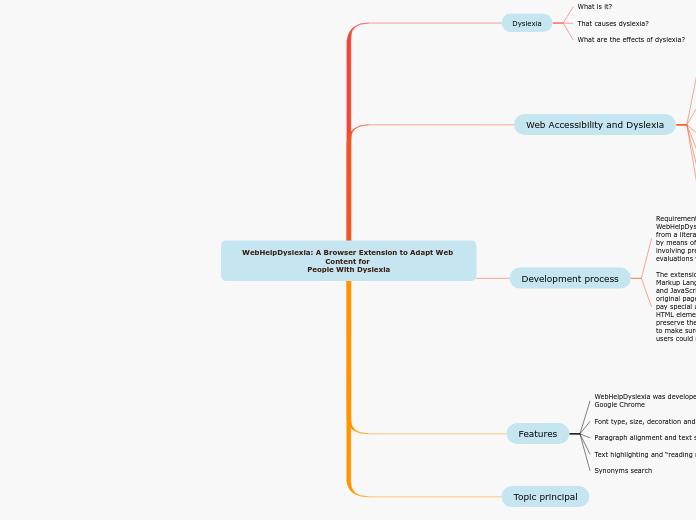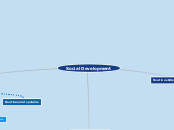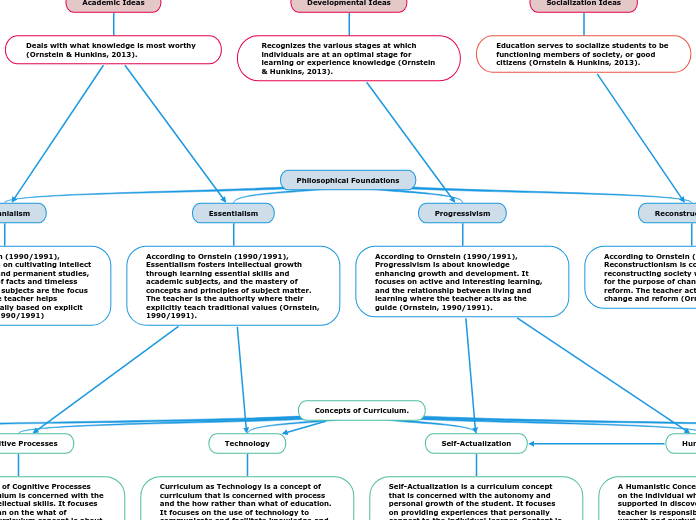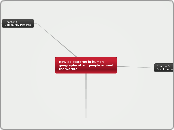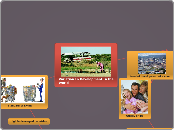WebHelpDyslexia: A Browser Extension to Adapt Web Content for
People With Dyslexia
To name your story, you have to think about the overall message and what you want your audience to understand from the story. Also, make it relevant and easy to remember.
Topic principal
Features
Synonyms search
Text highlighting and “reading ruler”
Paragraph alignment and text spacing
Font type, size, decoration and colour
WebHelpDyslexia was developed as an extension to Google Chrome
Development process
The ending of a story is essential. We all know that if the ending is weak, what happened before loses its importance. So make it unpredictable, but fair. A resolved ending answers all the questions and ties up any loose threads from the plot.
The extension was developed using HTML (HyperText Markup Language), CSS (Cascading Style Sheets) and JavaScript. The extension adds extra code to original pages. This way, it was very important to pay special attention to
HTML elements and to style sheets in order to preserve the characteristics of the original page and to make sure
users could read them.
This is the closure section of the story.
See examples of possible outcomes below:
- all problems have been solved
- it's clear how each one of your characters ends up
- your main character is transformed by the challenge
Requirements for the development of the WebHelpDyslexia extension were gathered mainly from a literature. Requirements were also gathered by means of two iterative development cycles involving preliminary
evaluations with dyslexic users
This is the moment when the main character surpasses the last obstacle and finally faces their greatest challenge.
The climax usually follows one of these patterns:
- realization
- resolution
- choice
Type in your answer.
Web Accessibility and Dyslexia
The middle of the story is where you add layers of complications that will lead to the end. Reveal more about the character's journey. Did their personality go through changes? How did they overcome the challenges? And as you build up the story’s central conflict, make it more personal to that character. Also, from the middle act, you have to lead into the final act.
Santana et al
Rello et al
Al-Wabil et al
There wouldn't be any tension and excitement in your story if there weren't any obstacles in your character's way.
Freire et al
Your character(s) need(s) motivation in order to solve the challenge(s).
their definition, this means they can perceive, understand, navigate and interact with the
Web
Each story has a main character and that character usually needs to solve a problem or challenge. The character's challenge is the one that creates tension throughout the story.
that Web accessibility means that disabled people can use the Web
effectively.
Dyslexia
In the beginning of the story (or the exposition), you will need to introduce the setting and characters. You might also want to introduce the main conflict. This part of the story is important because it gives the reader necessary background information and maybe even a first insight into a character’s personality.
What are the effects of dyslexia?
That causes dyslexia?
The setting (time & place) of a story can change throughout the plot.
What is it?
Characters are essential to a good story. Usually, the protagonist(s) is/are the most affected by the plot. Introduce a character by focusing on their actions, interests, and occupation, as the physical appearance doesn't make a difference in most cases.
